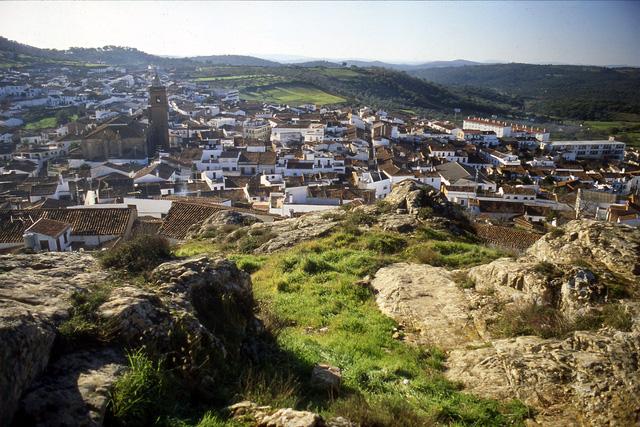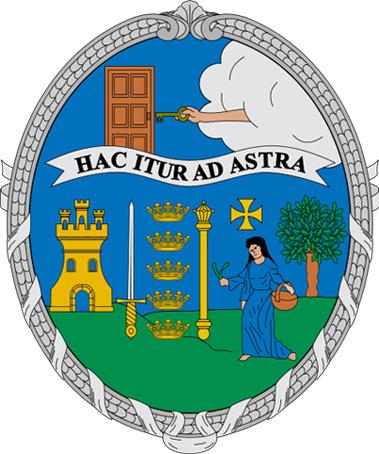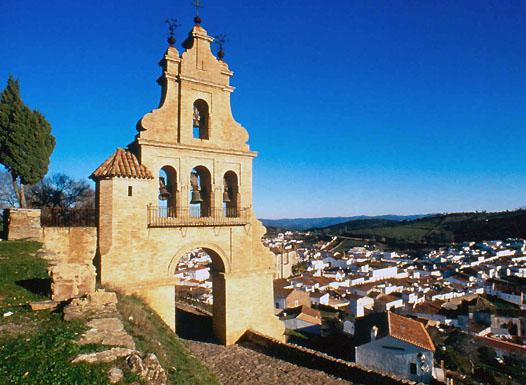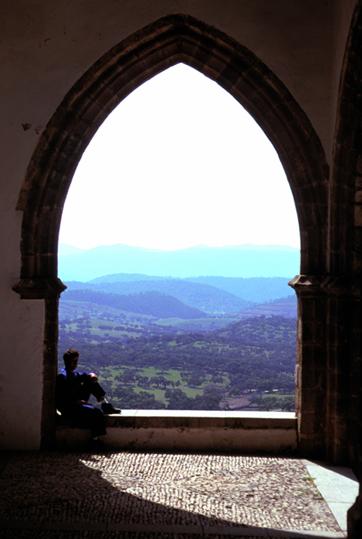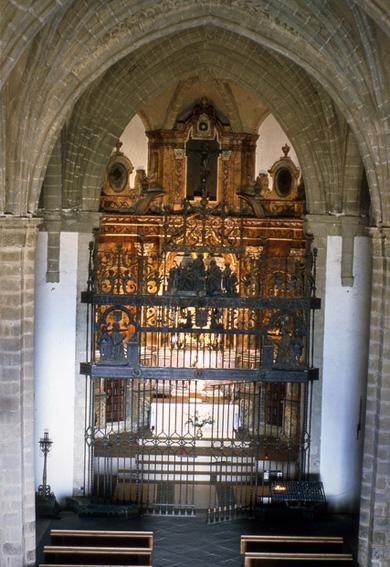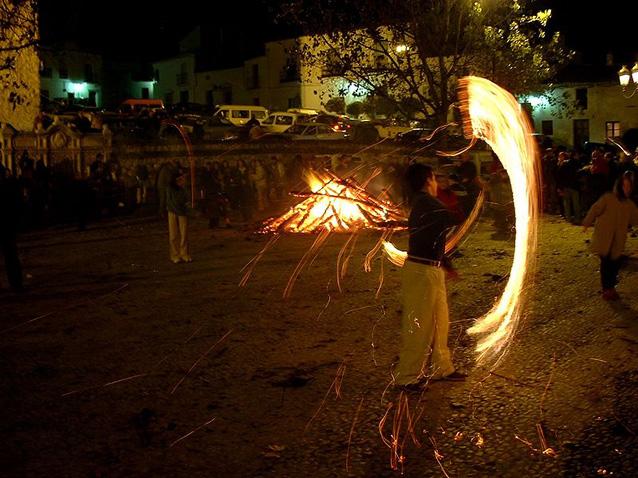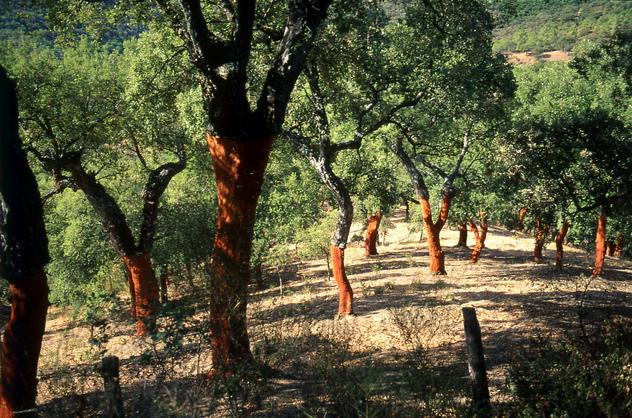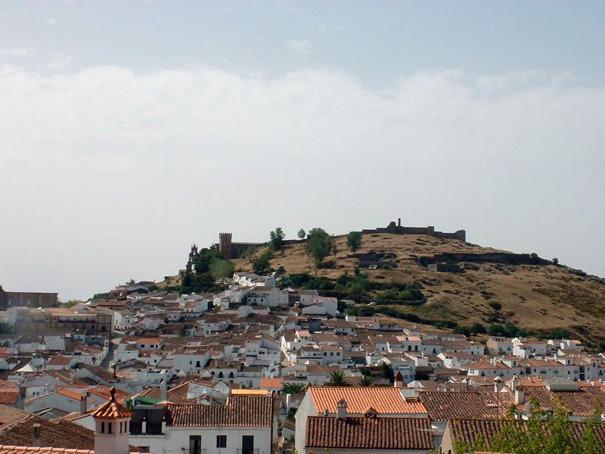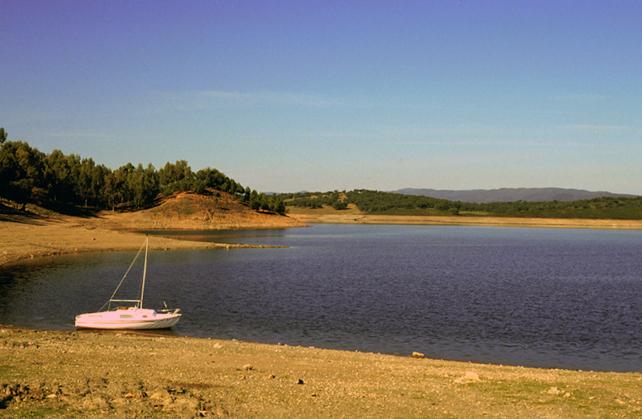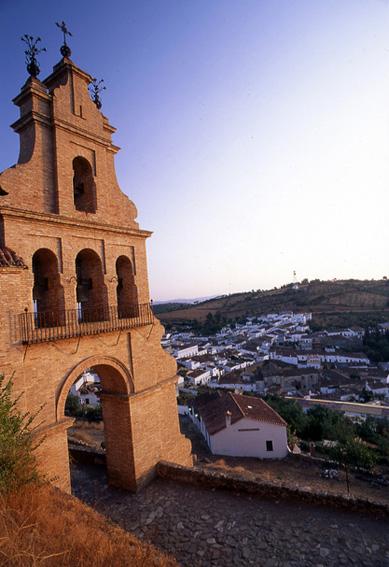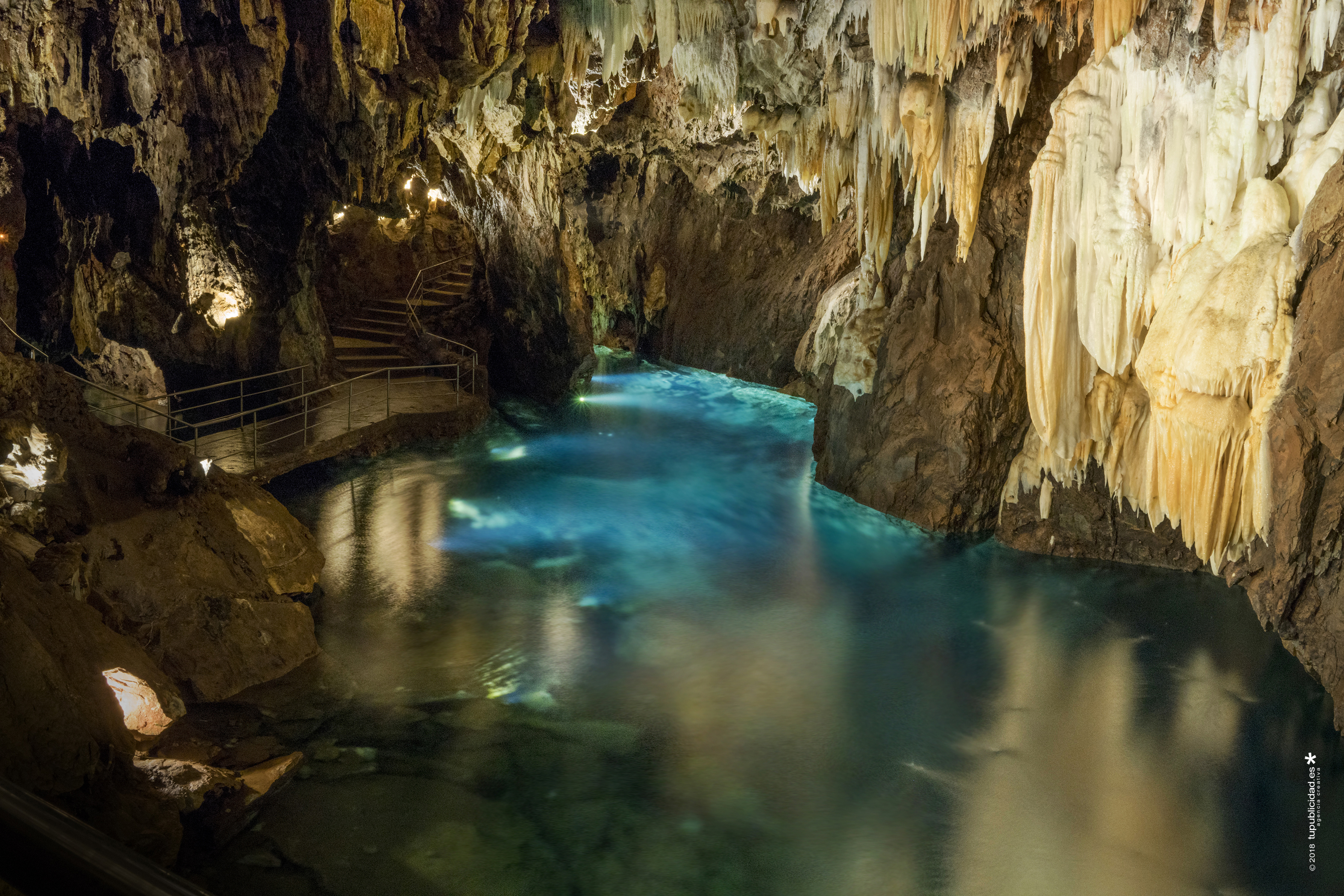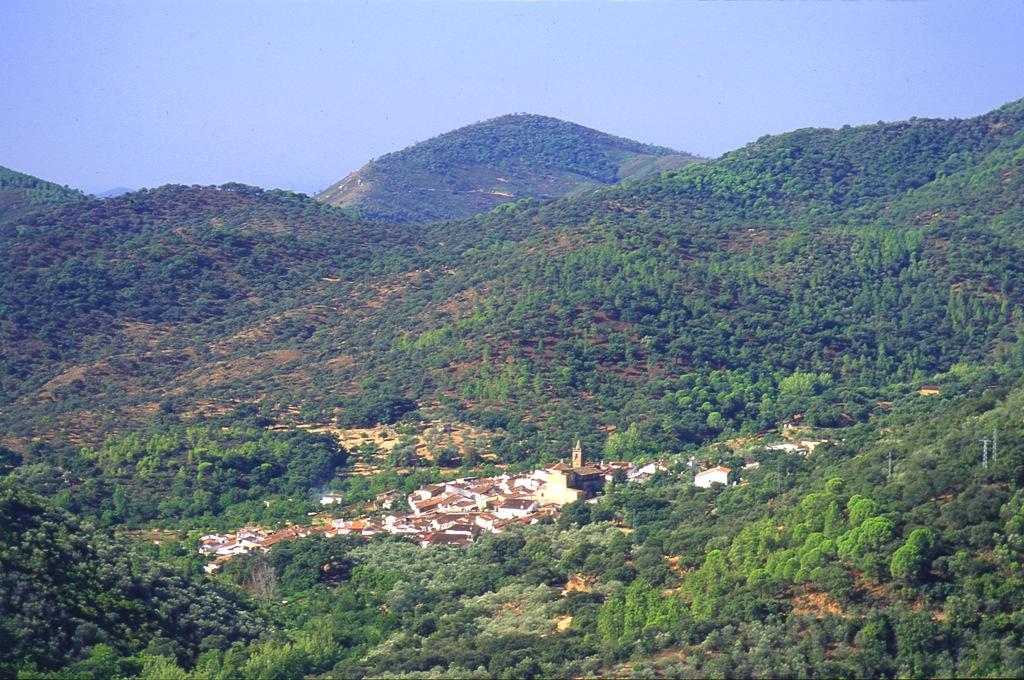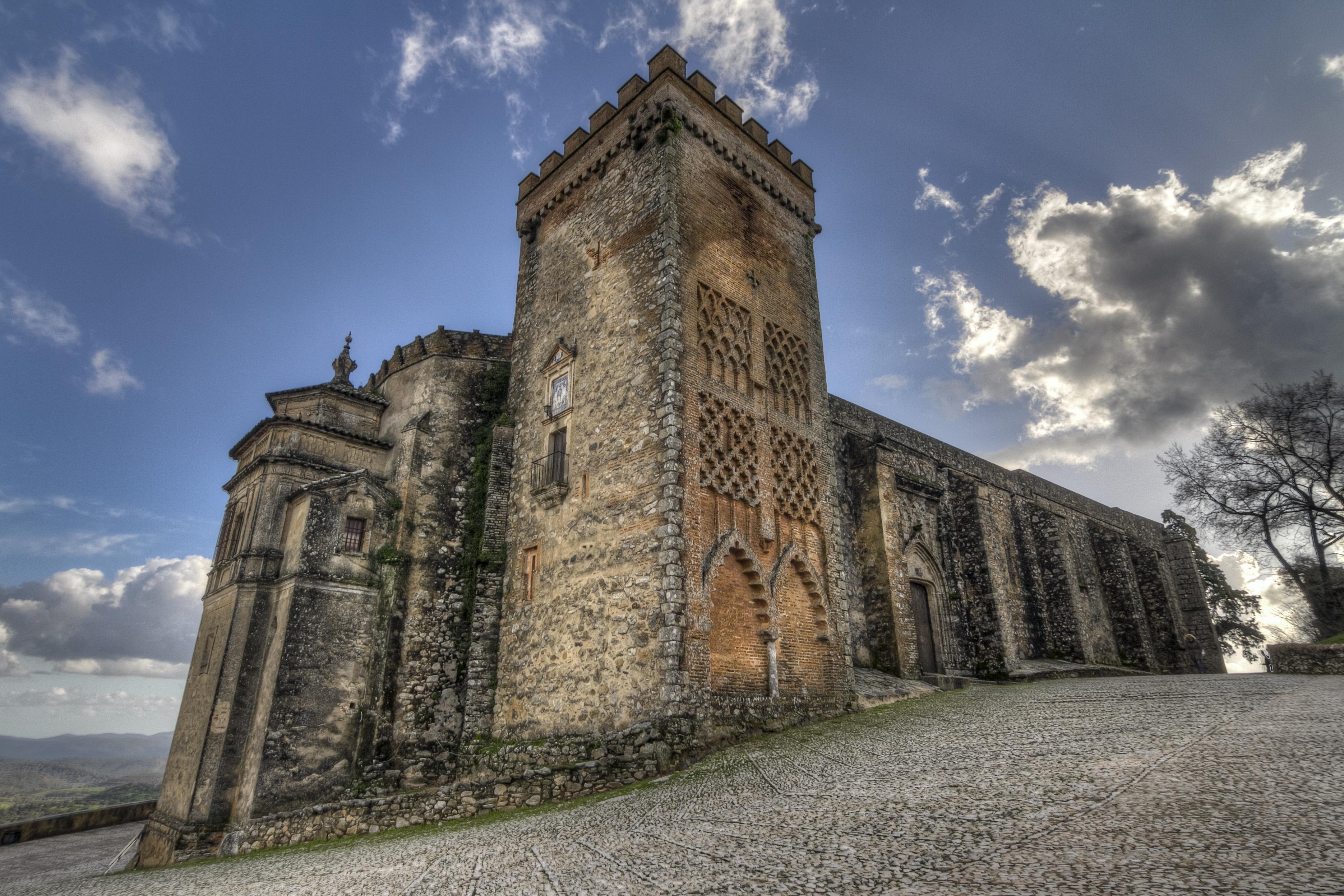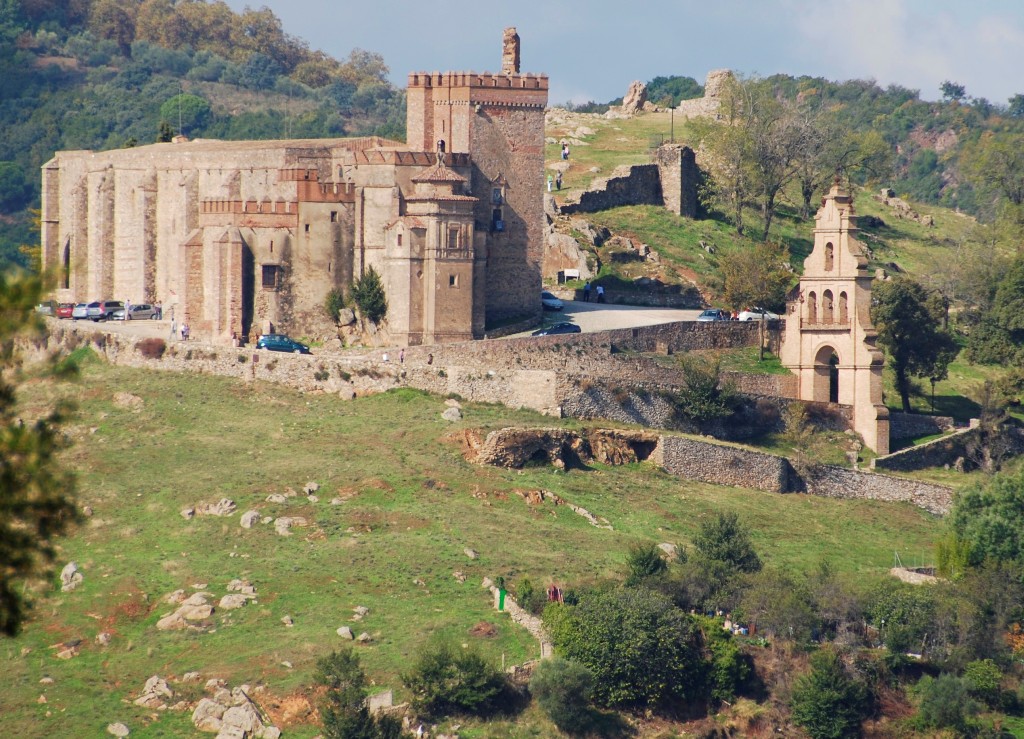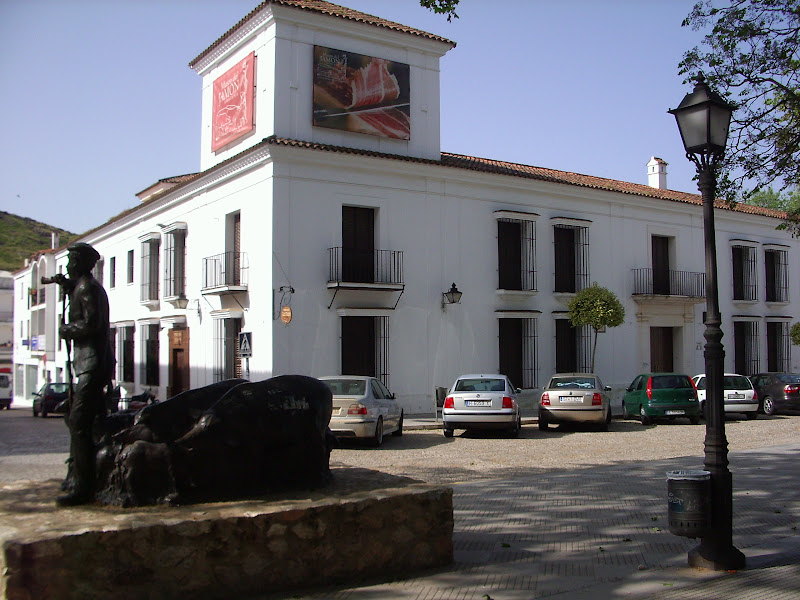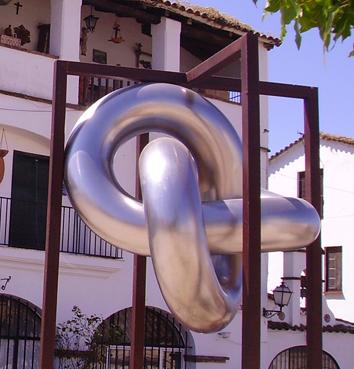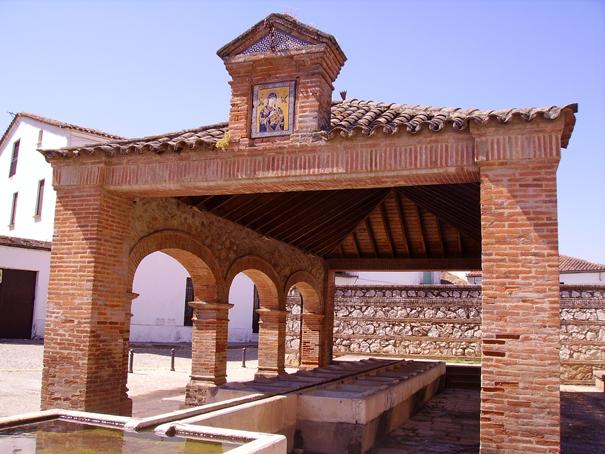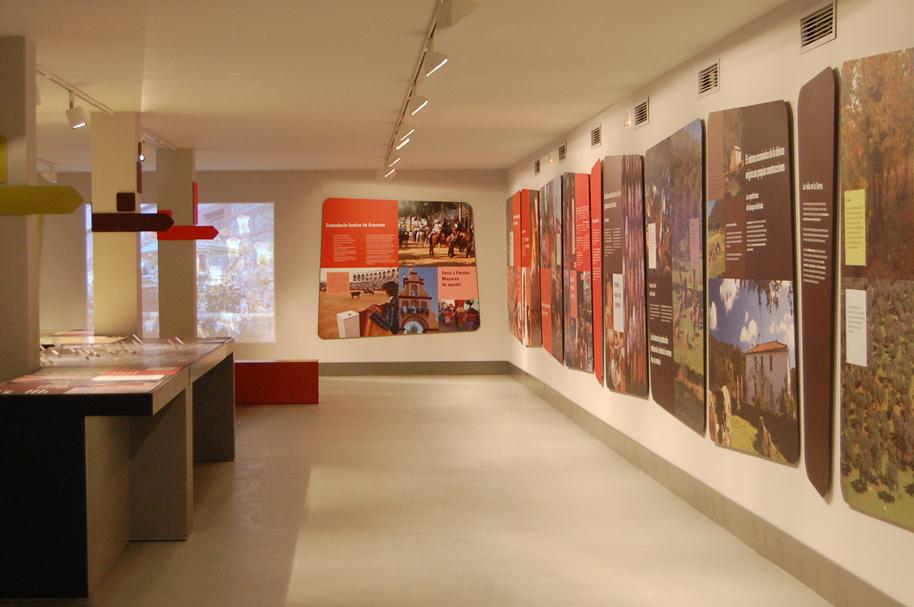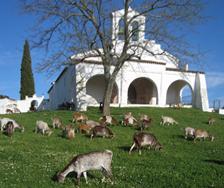Aracena
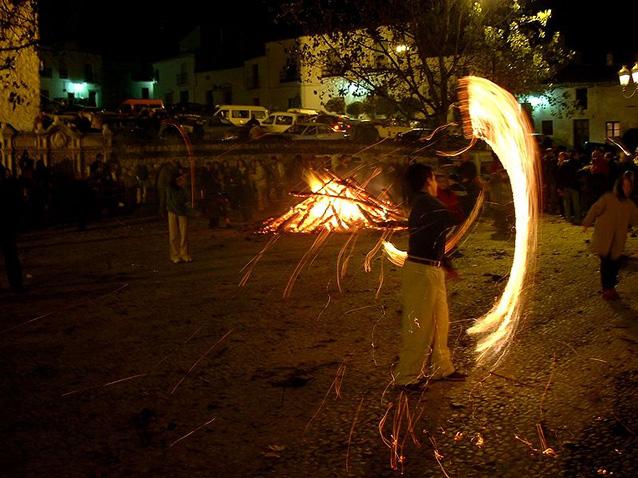
It is the capital of the region and it gives its name to the mountain range and the Parque Natural, one of the most important protected spaces of the Community, which occupies the whole of the north of the province with its meadows and small rises in the ground, covered predominantly in holm oak woods, cork oaks, chestnut trees and scrub through which numerous streams flow forming an extraordinarily beautiful and attractive landscape which is ideal for livestock, especially pigs which find the conditions here ideal.
The village itself, full of monuments and declared Property of Cultural Interest, is at the foot of the old castle and of the priory church of Nuestra Señora del Mayor Dolor, which still preserves the minaret of the mosque that preceded it. Apart from this and many other churches that form its heritage, the most notable feature (and for what it is best known) is the Gruta de las Maravillas, one of the most interesting carstic complexes in Spain.
History
The first settlers known to have inhabited the Aracena area date back to the Chalcolithic period, specifically with megalithic structures or dolmens and settlements found at La Mora Cave (in Umbría). The richness of minerals in the region favoured the establishment of villages during the Bronze Age. From this period, the village of "El Castañuelo" stands out. Here, two different cultures can be distinguished: one belonging to the Bronze Age (2nd millennium B.C.) and the other from the Iron Age (middle of the 1st millennium B.C.). Furthermore, mines were the reason for Roman settlements dating from the 1st century B.C. in the region known as Celtic Baeturia. The Roman settlement was based on small farming hamlets that comprised the precursor to the origins of Aracena and its surrounding villages, reaching its peak during the period of the Late Roman Empire, although it continued between the 5th and 7th centuries A.D., in the so-called Late Roman or Visigoth Period.
On the hill of Aracena Castle evidence of an important Islamic establishment with remains from the Caliphate Period (10th century), the Kingdoms of Taifas (11th century) and the Almohad Period (12th-13th centuries) has been documented. Popular tradition, based on the opinions of historians from the 18th and 19th centuries, defends the legend of the Templar presence but this is not recorded historically. It is understood that the Islamic name of the population was 'QatrašÄna', as mentioned by the documented sources of the Al-Andalus period along with other mountain towns, such as al-MunastÄ«r (Almonaster) and AwrÅ«š (Aroche). The conquest of Portugal in the mid-13th century, through the Orden del Hospital, resulted in the construction of the castle. This circumstance led to the Conflict of the Algarve, as the town was reclaimed by the Kingdom of Castile and León. The dispute with Portugal was not resolved until the signing of the Treaties of Badajoz in 1267 and Alcañices in 1297, thanks to which Aracena was yielded to Castile as lands of the crown and integrated within the Council Area of Seville. Aracena Castle was included in the so-called "Banda Gallega", which was a collection of fortifications that protected Seville from possible Portuguese attacks.
Aracena was a "castled" village on the hill during medieval times but, with the passage of time, the town expanded and conquered the valley below it. Of its inhabitants, half were shared over more than 30 villages located throughout the region. Some of these hamlets were transformed in modern and contemporary times into independent towns, while others disappeared. During the 15th and 16th centuries, the centre of the district was Plaza Alta where the Town Hall and the Parish Church of La Asunción were built. Urban expansion continued towards the Mudéjar chapels (San Pedro, Santa Lucia, San Roque and Santo Domingo) located on the roads to Huelva, Portugal, Extremadura and Seville, giving rise to the current urban landscape of Aracena.
During the Modern Age, it enjoyed a boom captured in population growth and urban expansion, an example of which was the founding of the Dominican and Carmelite convents. In the 17th century, it became a "manor" under the jurisdiction of the Count-Duke of Olivares, and later it depended on the Count of Altamira, who entitled himself Prince of Aracena. Notable figures of this period include the humanist, Benito Arias Montano, who founded a seat of Latinity in Aracena 1597, which was the focal point of culture until the end of the 19th century, and Sor Maria de la Trinidad, a mystic and poet who founded the Convent of Jesús, María and José in 1671. After the crisis caused by the Restoration War with Portugal, a form of recovery took place during the 18th century, which is represented in the popular architecture of the historic site.
In 1833 with the new administrative division, Aracena was split from Seville and became a part of the Province of Huelva. At the end of the 19th century and beginning of the 20th century, Aracena received a strong boost that materialised in its urban planning as stately houses and buildings built with the stamp of the famous architect, Aníbal González, such as the Town Hall of Santa Catalina, the Casino of Arias Montano, Plaza de Abastos and homes in Aracenilla. The discovery in 1850 of the Gruta de las Maravillas, and its subsequent adaptation to tourism in 1914, made Aracena the leader in underground tourism in Spain. A large part of this drive at the beginning of the 20th century was down to Francisco Javier Sánchez Dalp who held the title of Marquis of Aracena.
The Civil War and the resulting period of autarchy, which continued until the late 1950s, marked the crisis in farming capital and the primary sector in the local economy. At this point, significant changes to the social structure of Aracena took place, transforming it into a services town. The improved road links and the fact Sierra de Aracena and Picos de Aroche was declared a Natural Park and protected natural space turned Aracena and its villages into a first-class tourist destination where traditional aspects go hand-in-hand with modern elements. An example of this is the Outdoor Contemporary Art Museum "Andalucía", which is located in the streets and squares of the historic centre. In 1956, Aracena was declared a Town of Tourist Interest and since 2006 it has been a tourist district of Andalusia, being the first town in the Province of Huelva to receive such recognition.

- Max 21
- Min 11
- Max 69
- Min 51
- °C
- °F

